China is the hometown of tea and the birthplace of tea culture. When it comes to Chinese tea, Pu’er Tea is an essential part to be involved. Our Pu’er Tea Culture Tour offers a special platform for tea lovers to explore Chinese tea culture in Yunnan Province. During this 6-day China Tea Tour, you can appreciate the beautiful sceneries of tea gardens and see the primitive beauty of the 800-year-old Tea King Tree in Mount Nannuo. Besides, you will have the chance to taste local snacks of the Jinuo ethnic group, drink the famous Pu’er tea produced in different regions, and get close to the life of ethnic groups. What’s more, you can also learn about the history of Pu’er Tea and practice making a cup of tea under the guidance of the local producer. As such, you will learn the meaning of making tea by hand. Don’t hesitate and contact us now, your Pu’er Tea Tour is a click away!

Welcome to Kunming! Our guide will meet you at the exit of the arrival hall of Kunming Changshui International Airport and then transfer you to the hotel for a rest to prepare for the following Chinese Tea Culture Tour. Kunming, the capital of Yunnan province in China, is also called the “spring city” due to its unique climate that feels like being in spring all year round. Kunming covers an area of more than 21,012 square kilometers and has a population of 8,460,088 according to the seventh population census in China. It is also a multi-ethnic city. Besides the Han nationality, there are many ethnic groups in Kunming, including Yi ethnic group, Hui ethnic group, Bai ethnic group, Miao ethnic group, and so on.
 Pu’er
Pu’er Jinghong
Jinghong This morning, you will first be taken to the airport and start air traveling by an estimated flight MU5893 08:55/10:00 to Pu’er city. Upon your arrival, your local tour guide will pick you up at the airport. Then we will drive southeast for about 45 minutes to China Pu’er Tea Exhibition Garden, which is about 28 kilometers away from the airport. Pu’er Tea has a history of more than 1,000 years and was originally named by its central trading area, Pu’er City in Yunnan. According to its making process, Pu’er Tea can be divided into the Raw Pu’er tea which tastes mellow, and the Ripe Pu’er tea which tastes milder. In the Qing Dynasty (1636-1912), Pu’er Tea was a kind of tribute tea that was specially offered to the royal family. While in modern times, it has become a popular drink in many countries and regions because of its special effectiveness in reducing body weight and blood fat. In the tea exhibition garden, you will have a wonderful experience of appreciating beautiful scenery. Standing on the observation deck on the tea hills, you will slow down and get relaxed both mentally and physically by appreciating tea trees all over the hills. There are endless tea hills one after another. The most interesting activity here is making tea cakes, which are called Chabing in Chinese. At first, you will learn to pick up tea leaves under the guidance of local tea farmers. The leaves you pick up every time must be two leaves with a bud. Then turning tea leaves into drinkable tea involves four essential steps, including frying, twisting, drying, and pressing. After that, the finished product is finally ready for packing and you are allowed to sign your name on the package as a souvenir. Besides, you can also watch the performances about tea culture and tea art performed by ethnic minorities, and listen to the basic knowledge of Pu’er tea taught by tea artists.
After lunch, we will take you to Nandaohe Village by driving southwest for about 33 kilometers and it will take us around 46 minutes to get there. There is a famous coffee manor in the village, called Xiaowazi Coffee. Covering an area of around 200,000 square meters, this manor was built in 1997 by a coffee farmer. Today, it has become a comprehensive experience manor where you can learn the whole process from picking coffee beans to brewing a cup of coffee. What’s more, you can enjoy the clear water and green mountains at the same time.
Then, you will be driven to Jinghong in Xishuangbanna, around 98 kilometers south of Nandaohe Village. After 1.5-hour driving, we will arrive at the hotel and then you can have a rest.
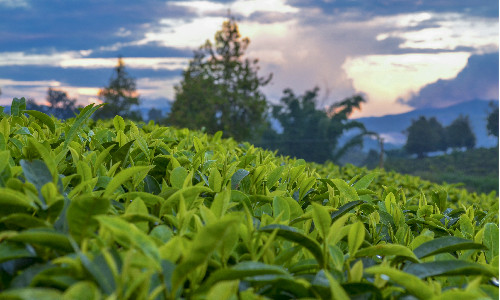

 Yiwu
Yiwu This morning we will arrange a visit to Yiwu Old Town, around 109 kilometers away from your hotel in Jinghong. We will drive east for about 2.5 hours. Yiwu has a long history of tea production. In the mid-Qing Dynasty, Yiwu town became the producing and marketing center of Pu’er tea in Xishuangbanna. Therefore, it is called the First Tribute Tea Town in China. The famous Yiwu Street was built along the slope and was paved entirely with stone slabs. In its tea trading heyday, on both sides of the street, there was tea plantation after tea plantation, shop after shop, house after house. Today you can also see many old buildings in the old town jagged and scattered, and the stone path is still the only way to connect them. Behind the old street is the tea mountain, which is shrouded in clouds and fog all year round. The natural environment of the tea mountain is well protected by the local tea farmers. Looking down from the highest slope of tea gardens, you can get a panoramic view of the old street. Walking on the stone road, through the quiet streets and old houses, you will feel quite relaxed. Maybe there will be some warmhearted local people inviting you to have a cup of tea in their house. Don’t be shy. You can visit their family and they are glad to show you the traditional way to make Pu’er tea. You will see some fresh tea leaves and many traditional tea tools in their family. Traditional tea making is a complex process that involves a series of steps. First, put the tea leaves in a special iron pan and fry them to evaporate the water. Do you remember what tea leaves should be picked up? The answer is two leaves with a bud. Then, twist the tea leaves to break the tea cells to ensure that the leaves’ sap can fully ooze out when brewed. The next step is drying the tea leaves in the sun. After that, the dried tea leaves will be steamed and pressed into different molds to become different shapes, some like a ball, some like a brick, and some like a pumpkin. The final step is packaging the tea cakes. After lunch, you will have a short rest and today’s sightseeing is finishing. You will be transferred back to the hotel.
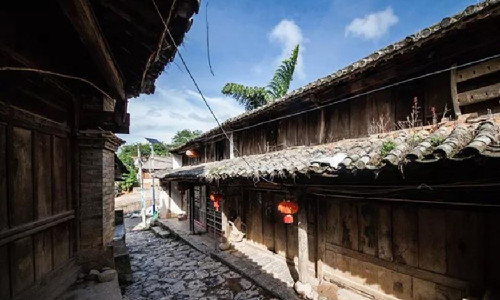

 Menglun
Menglun Jinghong
Jinghong You will start this wonderful day with a visit to Menglun Tropical Botanical Garden. We will pick you up at the hotel in Yiwu Old Town and then drive southwest to the garden, about 52 kilometers away from the town. It will take us 1.5 hours. Menglun Tropical Botanical Garden is located on a calabash-shaped island and it is the largest botanical garden in China, with the richest collection of species and the largest number of specialized plants area. It is known as the epitome of the plant kingdom. It has collected more than 12,000 kinds of live plants, built 38 special plant areas, and well preserved a 250-hectare patch of primary tropical rainforest. It is divided into two parts, the Western Area and the Eastern Area. Walking across a suspension bridge, you will enter the western garden. There are 20 gardens in this part, including Flower Garden, National Tree and Flower Garden, Ethnic Plant Garden, and so on. Along the road stand rows of tall subtropical trees. Then, in the experimental area, you will see maytenus hookeri loes, a kind of tree whose extract can be used for cancer treating. Sometimes you will meet some Dai ethnic group women wearing their folk costumes in the garden selling Ormosia, a symbol of the yearning between lovers in Chinese culture. In the center of the botanical garden, there is a pond with disk-like green leaves. One leaf is more than a meter in diameter and can support a weight of more than 20 kilograms. It is called Victoria amazonica, also known as Victoria water lily, Giant water lily, Amazon water lily, or Royal water lily. The leaves of Victoria water lily here could reach 1.92 meters in diameter, which are the largest size among all kinds of water lilies.
Every year, a science activity of “taking Victoria water lily as my boat” is held in the garden, attracting visitors to experience sitting on the huge leaves. This is the best time to enjoy the largest leaves among all aquatic plants in this tropical garden. Come to sit on the leaves floating in the water! Walking into the tropical rainforest area in the eastern part, you will see Strangling Ficus, also called the Strangler in the Forest. The growth of the Ficus is the vivid embodiment of the law of the jungle. After the fruits of Ficus are eaten by birds, the seeds are excreted onto other trees (which are called the host tree). With a hot and humid climate in the rain forest, seeds germinate quickly and produce many aerial roots. The aerial roots climb to the ground along the trunk of the host trees and grow in the soil. The strangler (that is the Ficus) and the the host tree compete for water and nourishment underground. Over time the host tree died because of the lack of water and nutrients. The Ficus tree then becomes an independent tree. Besides, you will meet the Desmodium gyrans, a kind of grass that can dance over time. It has three leaves on each petiole, one long and two short. In the morning, the long leaf spreads out flat and the two short leaves bob up and down, like a girl dancing. And in the afternoon, the long one droops and short leaves are still dancing. There are also many other fantastic plants in the garden, such as the Santalum album, Antiaris toxicaria Lesch, and Corypha umbraculifera. They are waiting for you to explore. Don’t hesitate!
After lunch, we will leave for the Jinuo Mountain Area, the northwest of the garden. We will drive about 49 kilometers in 1 hour and 20 minutes to get there. Jinuo Mountain Village is located in Bapo Village, northeast of Jinghong City. It is the birthplace of the Jinuo ethnic group for generations, which is the last of the 56 ethnic groups in China to be established and has about 20,000 residents. Here you can not only enjoy the scenery of Jinuo Mountain but also experience the folk customs of the Jinuo ethnic group. This village is an experiencing place of real scene performing of Jinuo culture and it has been designated as the traditional culture reserve of Jinuo people in Xishuangbanna. You will appreciate the unique performance in the Sun Square in the middle of the village. Young men and women dressed in Jinuo costumes sing and dance with props. You can taste the local special barbecue at the same time. When visiting the village, you will be welcomed by the hospitable Jinuo people, who will invite you to visit their family. You will see the unique Jinuo folk houses and costumes, and learn about their primitive production and lifestyle. Walking up the mountain, you will arrive at the ancient tea garden where most of the tea trees are growing under tall trees. The soil here is deep and fertile, which is suitable for growing tea trees. So, the tea finally produced is of excellent quality. Then you will be taken to visit the tea plantation nearby the village. The plantation mainly produces and sells Pu’er tea. You can visit the tea production workshop to see the worker how to make a tea cake in 15 minutes.
That’s the end of today’s tour. You will be escorted to the hotel in Jinghong City. We’re going to drive 28 kilometers southwest and it will take about 50 minutes.
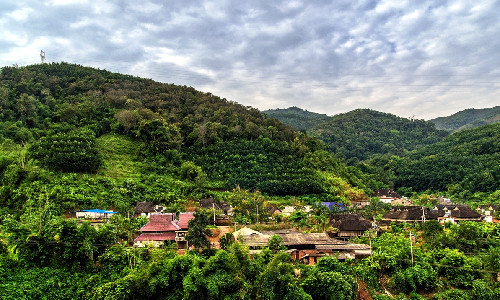
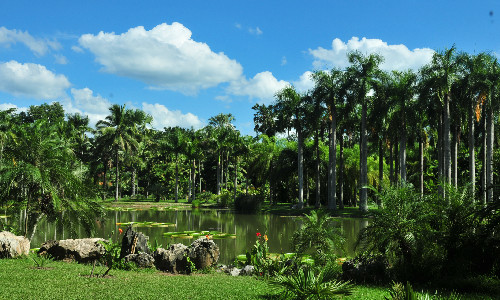
 Kunming
Kunming After a full trip yesterday, today we will arrange a leisurely visit to Nannuo Mountain. It is the last destination of our China Pu’er tea tour. This morning, we will offer you a hearty breakfast. And then, after an hour’s driving to the southwest, we will arrive at Nannuo Mountain, about 38 kilometers away from Jinghong. Mount Nannuo is a famous tea-producing area in Xishuangbanna. Around the mountain, tea gardens are all over the slope. The total area of Nannuo Mountain tea gardens is more than 14.4 square kilometers, among which the ancient tea gardens cover 8 square kilometers.
With little human intervention, the mountain has not been overdeveloped and the ancient tea gardens of Nannuo are well preserved. Ancient tea trees are mainly distributed in 9 natural villages on the Nannuo Mountain. Due to the wide distribution of planting, the tastes of tea vary among regions. Ban Po Ancient Village, lying halfway up the Nannuo Mountain, is the largest village that has the best conservation for the traditional tea of Mount Nannuo. There are more than 11,000 ancient trees with diameters of 18 centimeters or more in the Ban Po Ancient Village. Entering Ban Po Ancient Village is like walking into a primeval forest. The world-renowned 800-year-old Tea King Tree is in here. Today, you will be able to appreciate this old King Tree. As the roads are very narrow, people can only go up the mountain on foot. It is not easy to climb on rainy days or after rain. So, wearing sports shoes is recommended. Along the mountain road, you will see the sign that says “3100 steps away from the Tea King Tree”. It is a special representing way of local people. When getting to the tree, you will find that it is enclosed by an iron fence. It owns a strange appearance, whose branches spread gracefully from sky to earth. With more than 800 years old, the tea tree is still lush all year round. After sightseeing ancient tea trees, you can drink a cup of Pu’er tea in local families of the Ban Po Ancient Village. All residents in Nannuo have been growing and selling tea for generations, and almost every family has a tea room in their houses. When the tea is boiled, the water appears green and bright, fresh and tender. It tastes neither bitter nor astringent. The long-lasting flavor tastes mellow. I am sure that you will like it. You can bring some back and share them with your friends.
When the visit is over, we will drive you to the Xishuangbanna Gasa International Airport, 25 kilometers east away from the Nannuo Mountain. It takes around 0.5 hour. You will fly to Kunming by estimated flight EU2226 16:35/17:50. Upon your landing in Kunming, the local guide will meet you at the airport exit and escort you to the hotel in comfort.
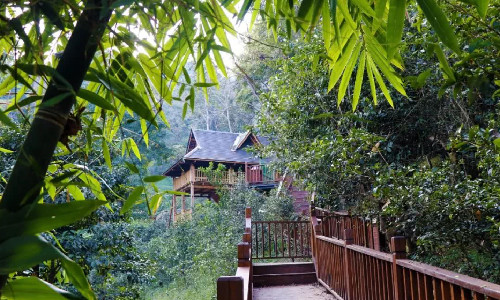

After breakfast, you will be escorted to the Kunming Changshui International Airport for your homeward flight. It’s recommended that all your belongings are taken when you check out of the hotel. If you want to extend your tour, please feel free to contact our travel consultant. We will be glad to arrange it for you!
Author: Yang Ying
Proofreader: Lexie
| City | Five Star hotel list | Four Star hotel list |
|---|---|---|
| Yiwu | Guest House | Guest House |
| Jinghong | InterContinental Xishuangbanna Resort | Xishuangbanna Elephanthome Yododo Inn |
| Kunming | Grand Park Kunming | UChoice Hotel |
 |
![]() About your child or infant, please contact us for a discounted price
About your child or infant, please contact us for a discounted price



We started with a few days in Beijing & ended in Shanghai, from where we visited the Forbidden City and Great Wall. In between we visited Terra Cotta Warriors Museum, Panda Base, Shanghai Disneyland.

We had a wonderful holiday in China which will remain long in the memory. China is a breathtakingly beautiful country full of splendid temples and palaces, mountains and rivers, peaceful rural scenes and bustling shopping streets.
 QUICK ENQUIRY
QUICK ENQUIRY